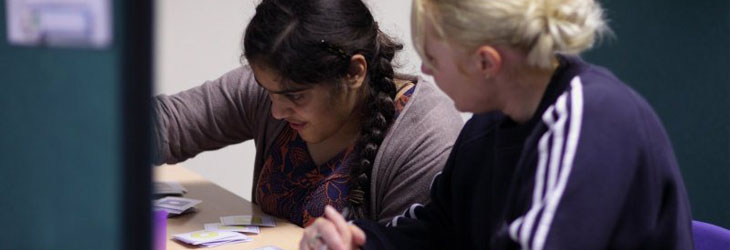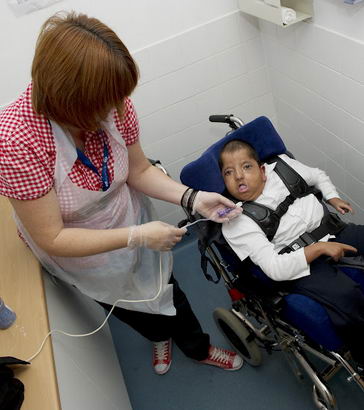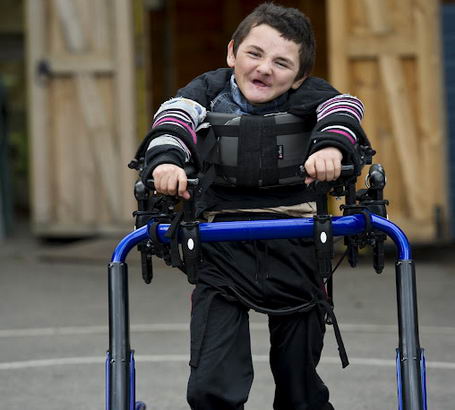The term complex needs is frequently used, yet there can be a lack of clarity regarding a shared definition across professional groups. The key issues relate to the co-existence of a number of conditions and the overlapping nature of their presentation and impact. It is these elements that make the needs 'complex' and result in the involvement of a wide range of professionals in education, social care and health services.
The following research report (pages 22-25) presents a definition of the term 'complex learning difficulties and disabilities'.

Critically appraise the needs of children that you are involved with and identify the range of co-existing and overlapping conditions and disorders that they present with.
Reflect on and identify the anticipated impact on their learning and development as they move into adulthood.
Children with complex learning difficulties and disabilities (CLDD) include those with co-existing conditions (eg autism and attention deficit hyperactivity disorder (ADHD)) or profound and multiple learning disabilities. However, they also include children who have newly begun to populate our schools – among them those who have difficulties arising from premature birth, have survived infancy due to advanced medical interventions, have disabilities arising from parental substance and alcohol abuse, and/or have rare chromosomal disorders.
Many may also be affected by compounding factors such as multisensory impairment or mental ill-health, or require invasive procedures, such as supported nutrition, assisted ventilation and rescue medication.
(Specialist Schools & Academies Trust (2011) The complex learning difficulties and disabilities research project: Developing pathways to personalised learning.)

Children with learning difficulties and disabilities can present with a range of physical health needs, for example, respiratory problems, epilepsy, impairments of hearing and vision, mobility and balance issues, gastric oesophageal reflux disorder and swallowing and choking problems.
The effective management and treatment of physical conditions is important as untreated health needs can impact on learning
and development. Increasingly the delivery of physical healthcare interventions are undertaken within the classroom setting
by teaching assistants and class teachers, thereby enabling children and young people with complex needs to benefit from education
and social networks.
There is now a growing research evidence-base of the extent of children's often unmet health needs and the consequences. Therefore the early assessment and identification of their needs is important to ensure that access to treatments and interventions are provided. An appreciation and understanding of the scope and range of the health needs is crucial in education settings as all practitioners have a key role to play in ensuring they are met safely and effectively and from a child-centred perspective.
This report published by the Health Observatory provides a comprehensive overview of the health needs experienced by people with learning disabilities.
Emerson E. & Baines S. (2010) Health Inequalities & People with Learning Disabilities in the UK: 2010. Bristol: Health Observatory.
needs (1)

To ensure that the range of physical health needs are addressed, involvement from practitioners in primary care and a range
of specialist health services, such as community child health, community psychiatric teams and community learning disability
teams is necessary. They have important roles in undertaking assessment and diagnosis, providing treatments and interventions
and education
and training.
Addressing health needs (2)
-
 Speech and language therapist3:12
Speech and language therapist3:12 -
 Physiotherapist3:49
Physiotherapist3:49 -
 Music therapist1:16
Music therapist1:16
Watch the videos and listen to the audio clip of the contributions made by the speech and language therapist, physiotherapist and music therapist as they talk about their role in meeting the health needs of children and young people with complex learning difficulties and disabilities.

- Critically reflect on the children that you are involved with.
- Develop a mind map of each class and the range of health needs experienced by the children.
- Identify the implications of the health needs on the school and the education workforce.
- Identify all the visiting professionals involved with the children and families where you practice.
- Critically review their contributions to meeting the health needs of children that supports their learning.
- Critically appraise policies and protocols that are in place to enable the health needs of children to be met safely.
A learning difficulty or disability can result in reduced intellectual ability and challenges with everyday activities. People with a learning difficulty or disability can take longer to learn and require additional support to develop new skills, understand complex information and relate to others.
The level of support required varies with each individual and increases with the severity of the learning difficulty or disability. It is important to recognise that whatever the underlying cause of the learning difficulty or disability, each individual is unique with their own gifts and skills that need to be recognised, valued and nurtured.
A learning difficulty or disability can arise before, during or after birth and results from a wide range of conditions, such as genetic disorders, foetal alcohol spectrum disorder, autism spectrum disorder, birth trauma, accidents and vaccine damage.

Read about Jade's diagnoses, strengths and difficulties below and listen to the audio clips on the next slide about her
range of needs, noting the comments relating to Foetal Alcohol
Spectrum Disorder.
Jade's diagnoses, strengths and difficulties
Identify three children that you are involved with and identify the cause of their learning difficulty or disability and the impact that it has on their learning and development.
A case study: Jade (2)
-
 Sources of support01:30
Sources of support01:30 -
 The learning environment01:27
The learning environment01:27 -
 Taking account of pupils' disabilities01:53
Taking account of pupils' disabilities01:53 -
 Music therapy0:22
Music therapy0:22

Emerson E. and Baines S. (2010) Health Inequalities & People with Learning Disabilities in the UK: 2010. Bristol: Health Observatory.
Leggett V., Jacobs P., Nation K., Scerif G. and Bishop D. (2010) Neurocognitive outcomes of individuals with a sex chromosome trisomy XXX, XYY, or XXY: A systematic review. Developmental Medicine and Child Neurology, 52, 119–129.
Liley A. and Manthorpe J. (2003) The impact of home enteral tube feeding in everyday life: A qualitative study. Journal of Health & Social Care in the Community, 11 (5) 415–422.
Parrott R., Tilley N. and Wolstenholme J. (2008) Changing demography and demands for services for people with complex needs and profound and multiple learning disabilities. Tizard Learning Disability Review, 13 (3) 26–34.

Royal College of Nursing (2011) Meeting the health needs of people with learning Disabilities. London: RCN.
Specialist Schools & Academies Trust (2011) The complex learning difficulties and disabilities research project: Developing pathways to personalised learning. London: SSAT.